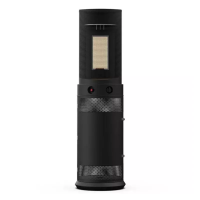Mimosa Backhaul Help Content
Mimosa Backhaul Compatibility
Copyright © 2014 Mimosa Page 43
Traffic Handling
Layer 2 Bridge
Mimosa Backhaul products are designed to operate as a Layer 2 transparent bridge (a virtual wire) for maximum
performance. The radios simply pass all traffic, regardless of type. However, they do support traffic prioritization
with four (4) quality of service (QoS) queues.
Multicast
Mimosa Backhaul radios function as a transparent Layer 2 bridge and forward all multicast traffic (i.e. 224.0.0.5 all
OSPF routers, 224.0.0.6 all DRs, etc.). They do not perform IGMP snooping to first determine if receiver(s) are on the
far end of the network.
Jumbo Frames
The default MTU size is 1500 bytes, but there is no MTU adjustment on the UI. Mimosa backhaul radios support
"baby jumbo" frames up to 3200 bytes without fragmentation in certain modes and modulation levels.
IPsec Tunnels
Mimosa Backhaul radios function as a transparent Layer 2 bridge and forward all traffic including IPsec. The radio
does not participate in IPsec connections and does not act as a VPN termination point. The radio can be configured
to use HTTPS and a VLAN ID for more secure management, however.
Link Aggregation Control Protocol (LACP) (IEEE 802.3ad)
Yes, the Mimosa Backhaul passes LACP packets.
Related:
Quality of Service (QOS) - Traffic prioritization queues
VLAN - Management VLAN

